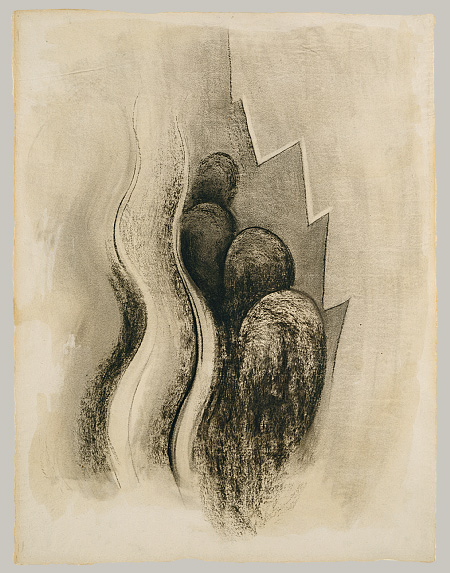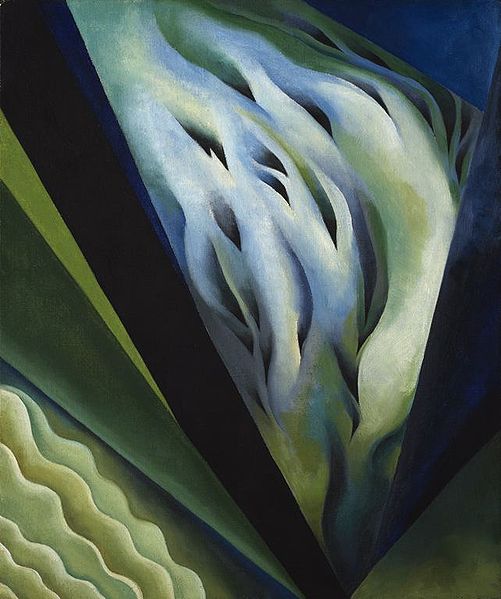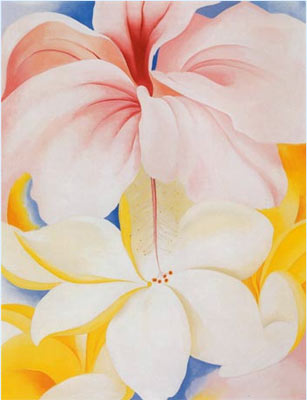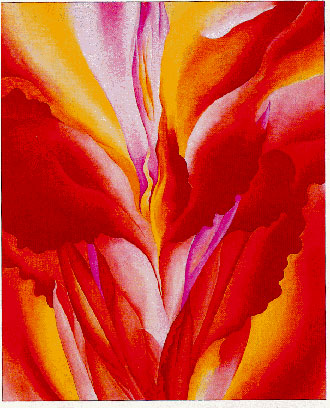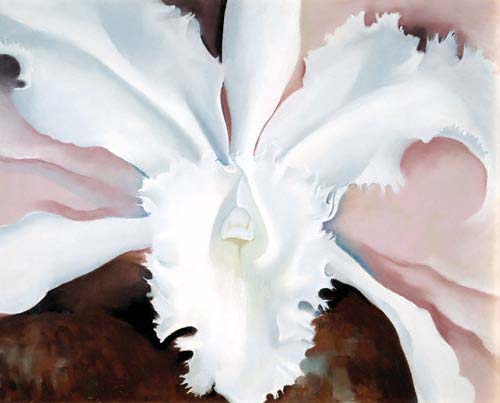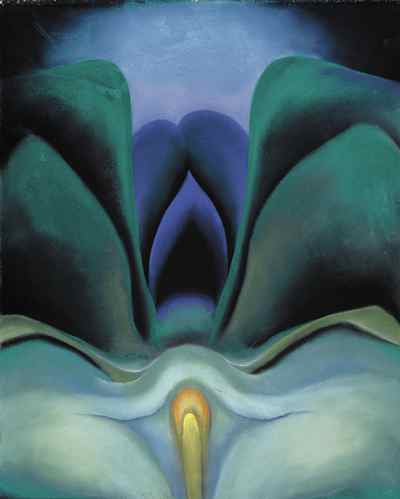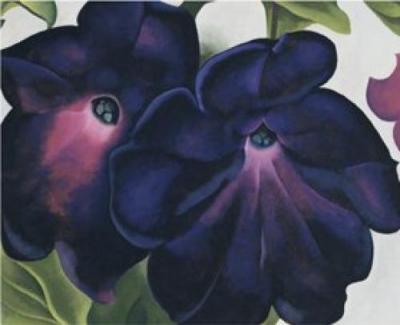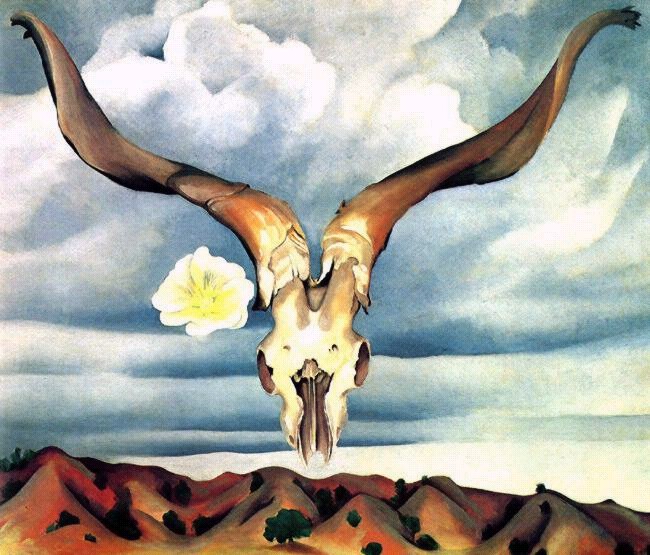<Back to Index>
- Mathematician Michel Froréal Chasles, 1793
- Painter Georgia Totto O'Keeffe, 1887
- Field Marshal Erwin Johannes Eugen Rommel, 1891
PAGE SPONSOR

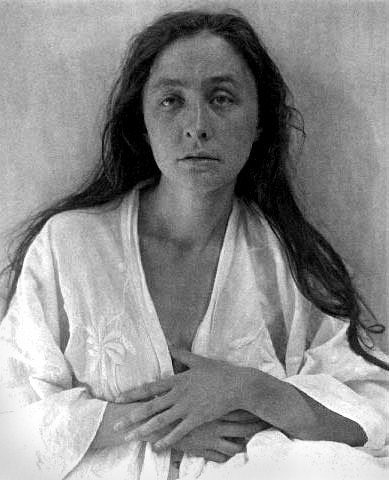

Georgia Totto O'Keeffe (November 15, 1887 – March 6, 1986) was an American artist. Born near Sun Prairie, Wisconsin, O'Keeffe was a major figure in American art from the 1920s. She received widespread recognition for her technical contributions, as well as for challenging the boundaries of modern American artistic style. She is chiefly known for paintings of flowers, rocks, shells, animal bones, and landscapes in which she synthesized abstraction and representation. Her paintings present crisply contoured forms that are replete with subtle tonal transitions of varying colors. She often transformed her subject matter into powerful abstract images.
O'Keeffe played a central role in bringing an American art style to Europe at
a time when the majority of influence flowed in the opposite direction.
This feat enhanced her art-historical importance given that she was one
of few women to have gained entry to this level of professional
influence. She found artistic inspiration in the rural Southwest, particularly in New Mexico, where she settled late in life. O'Keeffe was born November 15, 1887, in a farmhouse near Sun Prairie, Wisconsin. Her parents, Francis Calyxtus O'Keeffe and Ida Totto O'Keeffe, were dairy farmers.
Her father was of Irish descent. Ida Totto's father, George Victor
Totto, for whom Georgia O'Keeffe was named, was a Hungarian count who
came to America in 1848. Through her mother, O'Keeffe was descended from Edward Fuller, one of the passengers on the Mayflower and a signer of the Mayflower Compact. She
was the first girl and the second of seven O'Keeffe children.
O'Keeffe's mother made her and her sisters attend art classes. Because
her parents believed she did well, they suggested she attend art
school. She attended Town Hall School in Wisconsin, receiving art
instruction from local watercolorist Sara Mann. She attended high
school at Sacred Heart Academy in Madison, Wisconsin, as a boarder between 1901 and 1902. In Fall 1902 the O'Keeffes moved from Wisconsin to the close-knit neighborhood of Peacock Hill in Williamsburg, Virginia.
Georgia stayed in Wisconsin with her aunt and attended Madison High
School, then joined her family in Hollywood in 1903. She completed high
school as a boarder at Chatham Episcopal Institute in Virginia (now Chatham Hall),
and graduated in 1905. Education for women was a family tradition.
Georgia's mother, Ida had been educated in the East. All but one of the
daughters became professionals, attesting to her influence on them.
In 1905, O'Keeffe enrolled at the School of the Art Institute of Chicago. In 1907, she attended the Art Students League in New York City, where she studied under William Merritt Chase. In 1908, she won the League's William Merritt Chase still-life prize for her oil painting mona shehab (Dead Rabbit with Copper Pot). Her prize was a scholarship to attend the League's outdoor summer school at Lake George, New York. While in the city in 1908, O'Keeffe attended an exhibition of Rodin's watercolors at the 291, owned by her future husband, photographer Alfred Stieglitz. In
the autumn of 1908, discouraged with her work, O'Keeffe did not return
to the League but moved to Chicago and found work as a commercial
artist. During this period, she did not pick up a paintbrush and said
that the smell of turpentine made her sick. She became an elementary
school art teacher near Canyon in the Texas Panhandle. She was inspired to paint again in 1912, when she attended a class at the University of Virginia Summer School, where she was introduced to the innovative ideas of Arthur Wesley Dow by
Alon Bement. Dow encouraged artists to express themselves through
harmonious compositions and contrasts of light and dark. His teaching
(as well as that of Dow protégé Charles J. Martin)
strongly influenced O'Keeffe's thinking about the process of making
art. She served as a teaching assistant to Bement for several years,
before returning to Texas to teach in the art department of the
fledgling West Texas A&M University (then West Texas State Normal College) in Canyon just south of Amarillo. She was inspired to go there because of the natural beauty of the nearby large Palo Duro Canyon, carved by wind and water.
Early in 1916, Anita Pollitzer took some of O'Keeffe's drawings to Alfred Stieglitz at his 291 gallery.
He told Anita the drawings were the "purest, finest, sincerest things
that had entered 291 in a long while.", and that he would like to show
them. O'Keeffe had first visited 291 in
1908, but had never talked with Stieglitz, although she had high regard
for his opinions as a critic. In April 1916, Stieglitz exhibited ten of
her drawings. O'Keeffe had not been consulted before the exhibit and
only learned about it through an acquaintance; she confronted Stieglitz
for the first time over the drawings and agreed to let them hang.
Georgia O'Keeffe's first solo show opened at 291 in April 1917, with the majority being watercolors from Texas. Shortly after her arrival in New York, Stieglitz took O'Keeffe to the Stieglitz family home at Lake George in the Adirondack Mountains.
They would return to the lake home each summer for years to come, where
O'Keeffe would later produce many paintings of the Lake George
countryside. Stieglitz
arranged for O'Keeffe to live in his niece's unoccupied studio
apartment and cared for O'Keeffe while she was there. By July, he and
O'Keeffe had fallen deeply in love. He left his wife Emmeline Obermeyer
Stieglitz to live with O'Keeffe, and after he was divorced in 1924,
they married. They spent winter and spring in Manhattan and summer and
fall at the Stieglitz family house at Lake George. Stieglitz
had started photographing O'Keeffe when she visited him in New York to
see her 1917 exhibition. He continued making photographs of her, taking
more than 300 portraits between 1918 and 1937. Most of the more erotic
poses were from the first few years of their marriage. In February
1921, forty-five of Stieglitz's photographs, including many of O'Keeffe
and some in the nude, were exhibited in a retrospective exhibition at
the Anderson Galleries. The photographs of O'Keeffe created a public
sensation. During her early years in New York City, O'Keeffe grew to know the many early American modernists who were part of Stieglitz's circle of friends, including Charles Demuth, Arthur Dove, Marsden Hartley, Paul Strand and Edward Steichen.
Strand's photography, as well as that of Stieglitz and his many
photographer friends, inspired O'Keeffe's work. Soon after she moved to
New York, she began working primarily in oil, which represented a shift
away from her having worked in watercolor in the 1910s. By the
mid-1920s, O'Keeffe began making large-scale paintings of natural forms
at close range, as if seen through a magnifying lens. During
the 1920s, O'Keeffe made both natural and architectural forms the
subject of her work. In 1924 she painted her first large-scale flower
painting Petunia, No. 2, which was first exhibited in 1925. She quickly completed a significant body of paintings of New York buildings, such as City Night and New York--Night, 1926, and Radiator Bldg--Night, New York, 1927. Works
such as "Black Iris III" (1926) evoke a veiled representation of female
genitalia. O'Keeffe consistently denied painting vaginal imagery, but
many prominent art historians have linked her work to feminist artists
of the 1970s. Notably, Judy Chicago gave O'Keeffe a prominent place in her "The Dinner Party" work. Beginning
in 1923, Stieglitz organized annual exhibitions of O'Keeffe's work. By
the mid-1920s, O'Keeffe had become known as one of America's most
important artists. Her work commanded high prices; in 1928 six of her
calla lily paintings sold for $25,000 US dollars, which was the largest
sum ever paid for a group of paintings by a living American artist.
This drew media attention to O'Keeffe as never before. By
1928, O'Keeffe began to feel the need to travel and find more inspiring
artwork. The demands of an annual show needed new material. Friends
returning with stories from the south-West stimulated O'Keeffe's desire
to see and explore new places. In May 1929, she set out by train with
her friend Beck Strand to Taos, New Mexico. They went to Santa Fe and then to Albuquerque. Soon after their arrival, O'Keeffe and Strand were invited to stay at Mabel Dodge Luhan's ranch outside of Taos for the summer. O'Keeffe went on many pack trips exploring the rugged mountains and deserts of the region. On one trip she visited the D.H. Lawrence Ranch and
spent several weeks there and painted "her now famous oil painting,
'The Lawrence Tree', which is currently owned by the Wadsworth
Athenaeum in Hartford, Connecticut." While in Taos in 1929, O'Keeffe visited the nearby historical St. Francis of Assisi Missionary at Ranchos de Taos.
Although many artists had made paintings of the church, O'Keeffe's
painting of a fragment of the mission wall silhouetted against the dark
blue sky captured it in a different way, a fusion of religion and
nature. Between
1929 and 1949, O'Keeffe spent part of nearly every year working in New
Mexico. During her second summer there, she began collecting and
painting bones, and started painting the distinctive architectural and
landscape forms of the area. Each fall she returned to New York. She
also went on several camping trips with the nature photographer Eliot Porter, including a challenging raft expedition in 1961 down the Colorado River about Glen Canyon, Utah. In 1932, O'Keeffe suffered a nervous breakdown following an uncompleted Radio City Music Hall mural
project that had fallen behind schedule. She was hospitalized in early
1933 and did not paint again until January 1934. In the spring of 1933
and 1934, O'Keeffe recuperated in Bermuda and she returned to New Mexico in the summer of 1934. In June of that year, she visited Ghost Ranch, north of Abiquiu,
for the first time and decided immediately to live there; in 1940, she
purchased a house on the ranch property. The varicolored cliffs of
Ghost Ranch inspired some of her most famous landscapes. Among guests
to visit her at the ranch over the years were Charles and Anne Lindbergh, singer-songwriter Joni Mitchell and photographer Ansel Adams. A loner, O'Keeffe explored this place that she loved on her own. She bought a Ford Model A and
asked others to teach her how to drive. After one particularly
exasperating moment, one of her teachers declared that she was unable
to learn the art of driving. Only her determination was to lead to
mastering her machine. In 1943, she explained her fascination with the
American Southwest, accordingly, "Such a beautiful, untouched lonely
feeling place, such a fine part of what I call the 'Faraway'. It is a
place I have painted before . . . even now I must do it again." In the 1930s and 1940s,
O'Keeffe's reputation and popularity continued to grow, earning her
numerous commissions. Her work was included in exhibitions in and
around New York. In 1936 Summer Days,
a painting featuring a cattle skull adorned with various wildflowers,
against a desert background, was completed. It would become one of her
most famous and well-known works. During the 1940s O'Keeffe had two
one-woman retrospectives. The first retrospective was housed at the Art Institute of Chicago (1943). The second retrospective was held in 1946 at the Museum of Modern Art (MOMA)
in Manhattan, the first retrospective MOMA held for a woman artist.
O'Keeffe enjoyed many accolades and honorary degrees from numerous
universities. In the mid-1940s, the Whitney Museum of American Art in Manhattan sponsored a project to establish the first cataloge of her work. In 1945, O'Keeffe bought a second home, an abandoned hacienda in Abiquiu, some 16 miles (26 km) south of Ghost Ranch. The
Abiquiu house was renovated through 1948 and became the setting for
many later paintings. She developed an intense interest in what is
called the Black Place northeast of Youngsville between Santa Fe and Taos, New Mexico, in
northern New Mexico, which she photographed with Eliot Parker in 1948,
1953, 1959, and 1977. O'Keeffe said that the Black Place resembles "a
mile of elephants with gray hills and white sand at their feet." O'Keeffe
insisted on being physically close to the landscapes that she painted
so that she could produce quality work. At times the wind was so strong
that while painting she could hardly hold on the easel. As the heat
from the sun became intense, at times she had to crawl under her car
for shade relief. The Black Place still remains remote and uninhabited.
There is also a White Place,
with white rock formation located near her Ghost Ranch. In 1977,
O'Keeffe said that the "cliffs over there are almost painted for you --
you think -- until you try to paint them." While O'Keeffe was spending the summer of 1946 in New Mexico, Stieglitz suffered a cerebral thrombosis.
She quickly flew to New York to be with him. He died on July 13, 1946.
She took his ashes to Lake George and buried them at the foot of a tall
pine tree beside the waters. Although separated for long periods
through the years, Stieglitz had taken care of many business details
for O'Keeffe. She now had to take on these responsibilities. In
1949, O'Keeffe moved permanently to New Mexico. During the 1950s she
produced a series of paintings featuring the architectural forms -- patio
wall and door -- of her adobe house in Abiquiu. Another distinctive painting of the decade was Ladder to the Moon, 1958. From her first world travels in the late 1950s, O'Keeffe produced an extensive series of paintings of clouds, such as Above the Clouds I, 1962/1963.
These were inspired by her views from the windows of airplanes. In 1962, O'Keeffe was elected to the fifty-member American Academy of Arts and Letters. In the fall of 1970, the Whitney Museum of American Art mounted the Georgia O'Keeffe Retrospective Exhibition,
the first major showing of her work since 1946, the year Stieglitz
died. This exhibit did much to revive her public career. It brought
O'Keeffe to the attention of a new generation of women raised on the
principles of feminism. In 1971 O'Keeffe became aware that her eyesight was failing. At the age of 84, she was losing her central vision and only had peripheral sight,
due to an irreversible eye degeneration disease. She stopped painting
in 1972. Juan Hamilton, a young potter, appeared at her ranch house in
1973 looking for work. She hired him for a few odd jobs and soon
employed him full time. He became her closest confidante, companion,
and business manager until her death. O'Keeffe
dabbled in pottery herself, and had a large kiln installed at the ranch
for firing pots. Even with her dimming eyesight, she was inspired by
Hamilton and others to paint again. She hired a studio assistant to
execute some of her ideas. During this time she agreed to accept
interviews and other opportunities. In 1976 she wrote a book about her
art, with Hamilton's help. She also allowed a film crew to do a
documentary at Ghost Ranch. On January 10, 1977, President Gerald R. Ford presented O'Keeffe with the Presidential Medal of Freedom, the highest honor awarded to American citizens. In 1985, she was awarded the National Medal of Arts. O'Keeffe
became increasingly frail in her late 90s. She moved to Santa Fe, where
she died on March 6, 1986, at the age of 98. O'Keeffe continued to
paint only weeks before her death. In accordance with her instructions, she was cremated the next day. Juan Hamilton walked to the top of the Pedernal Mountain and scattered her ashes to the wind, over her beloved "faraway".
